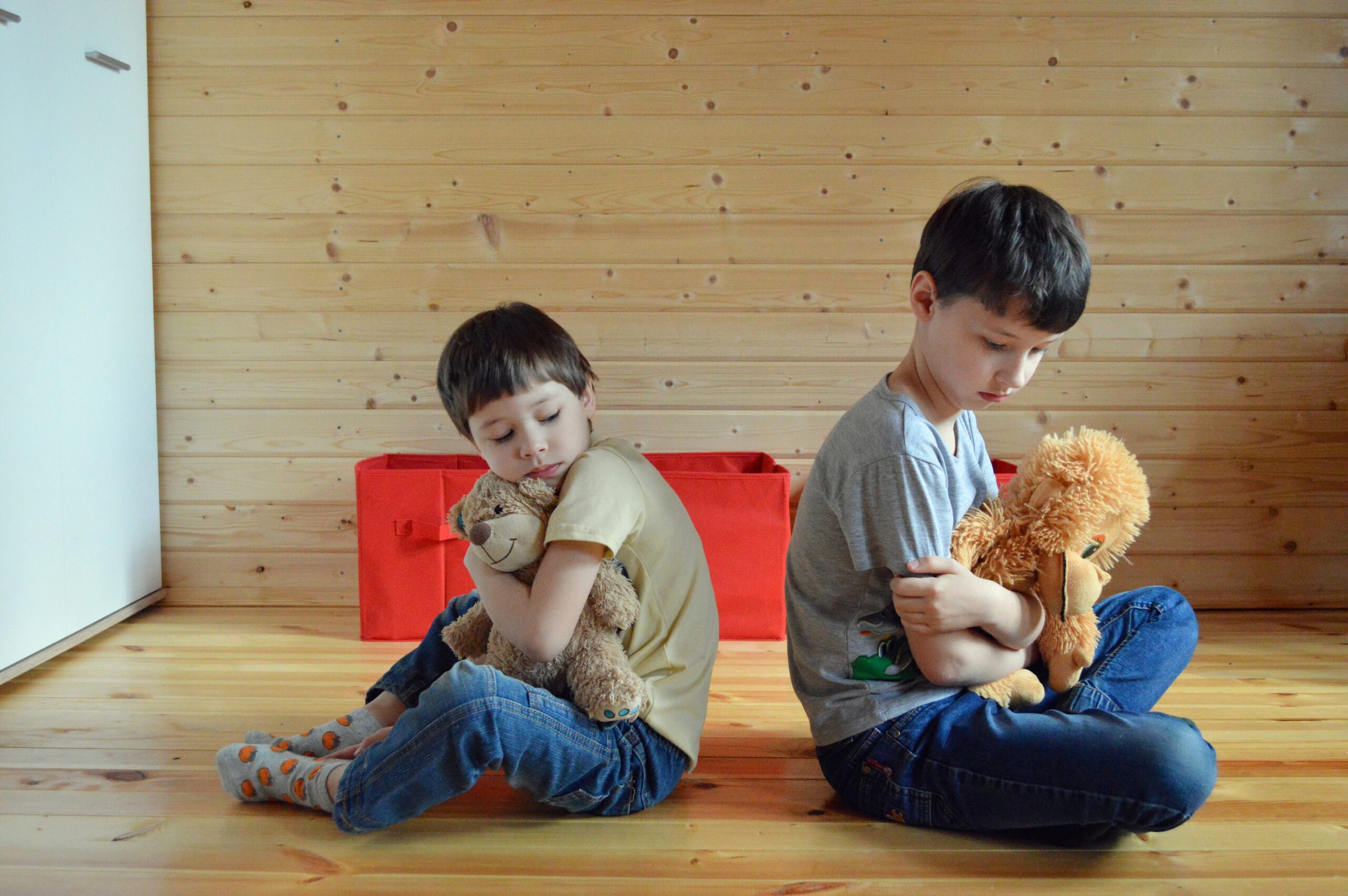One of the most crucial aspects of parenting is guiding and shaping a child’s positive behavior. Understanding the nuances of kids’ behavior and employing effective techniques can lay the foundation for a harmonious family dynamic and contribute to a child’s healthy development. In this article, we’ll explore valuable strategies to nurture positive behavior in children.
Nurturing Positive Behavior in Children:
Parenting is a wonderful journey filled with joys, challenges, and countless opportunities for growth – both for parents and their children. One of the most crucial aspects of parenting is guiding and shaping a child’s behavior. Understanding the nuances of kids’ behavior and employing effective techniques can lay the foundation for a harmonious family dynamic and contribute to a child’s healthy development. In this article, we’ll explore valuable strategies to nurture positive behavior in children.
Lead by Example
Children are keen observers. They learn from the actions and behaviors of the adults around them. Modeling the behavior you want to see in your children can have a profound impact. Whether it’s displaying kindness, respect, or patience, your actions serve as a powerful teaching tool.
Clear Communication
Effective communication is key to understanding kids’ emotions and motivations. Encourage open dialogue with your children. Engage in active listening, pose open-ended inquiries, and acknowledge their emotions. This not only helps them express themselves but also fosters a sense of trust and connection.
Set Clear Expectations
Children flourish within a framework of routine and structure. Clearly established rules and expectations offer a reassuring sense of security. Elaborate on the rationale behind these rules and the constructive results they yield. Maintain consistency in upholding these expectations, as it aids children in comprehending boundaries and fosters positive behavior.
Positive Reinforcement
Celebrate the small victories. Positive reinforcement, such as praise and rewards, reinforces desirable behaviors. Acknowledging their efforts boosts their self-esteem and encourages them to continue making positive choices.
Use Consequences Thoughtfully
While positive reinforcement is important, consequences are also part of teaching responsibility. Ensure consequences are age-appropriate, reasonable, and related to the behavior. Emphasize the importance of teaching lessons rather than resorting to punishment.
Empower Decision-Making
Give children opportunities to make choices within safe boundaries. This helps them develop decision-making skills, a sense of autonomy, and accountability for their actions.
Teach Emotional Intelligence
Help children recognize and manage their emotions. Teach them healthy ways to express themselves, and provide tools like deep breathing or journaling to cope with challenging feelings.
Create a Supportive Environment
Children flourish when they feel loved and supported. Show empathy and understanding, even when addressing negative behavior. Encourage them to share their challenges and concerns without fear of judgment.
Encourage Problem-Solving
Guide children to find solutions to their problems. This empowers them to think critically, consider consequences, and develop essential life skills.
Practice Patience
Behavioral changes take time. Be patient and understanding as children learn and grow. Celebrate progress, no matter how small, and remember that mistakes are opportunities for learning.
Continuing the Journey: Advanced Techniques for Shaping Positive Behavior in Children
In the intricate tapestry of parenting, understanding kids’ behavior and employing effective techniques is an ongoing adventure. Building on the foundational strategies discussed earlier, let’s delve into advanced techniques that can further enrich your parenting journey and cultivate a harmonious family environment.
Active Listening and Empathy
Beyond just hearing words, practice active listening to truly understand your child’s perspective. Cultivate empathy by putting yourself in their shoes. This deep connection fosters trust and enhances communication, allowing you to address underlying emotions that might be driving certain behaviors.
Promote Independence
Encourage children to take ownership of their responsibilities. Assign age-appropriate tasks that contribute to the family dynamic. This not only instills a sense of accomplishment but also helps them understand the importance of contributing to the household.
Mindful Discipline
Discipline isn’t solely about correction; it’s about teaching. Embrace a mindful approach by discussing the consequences of actions, exploring alternatives, and guiding children to arrive at their own conclusions. This approach promotes critical thinking and self-regulation.
Teach Problem-Solving Skills
Equip children with the tools to navigate challenges independently. Motivate them to generate solution ideas, assess possible results, and select the optimal path forward. Problem-solving skills foster confidence and resilience.
Cultivate Emotional Resilience
Life presents its share of ups and downs. Teach children to handle disappointments and setbacks with grace. Show them that it’s okay to experience negative emotions and guide them in healthy coping mechanisms.
Encourage Empathy and Kindness
Nurturing kindness is a gift that keeps on giving. Engage in acts of kindness as a family, and discuss the impact of these actions. Encourage children to consider the feelings of others and understand the value of compassion.
Constructive Feedback
Provide feedback that focuses on behavior rather than the child’s character. Instead of saying “You’re lazy,” say “Leaving your toys around is not responsible.” This helps children separate their actions from their self-worth.
Create a Learning Environment
Transform challenging moments into opportunities for growth. When faced with mistakes, guide children in exploring what went wrong and how they can approach the situation differently next time.
Time Management and Planning
Introduce the concept of time management and planning early on. Help children understand the importance of managing tasks, setting priorities, and meeting deadlines – skills that are valuable throughout life.
Encourage Curiosity
Foster a love for learning by encouraging curiosity. Answer their questions, engage in discussions, and explore new topics together. This not only broadens their horizons but also promotes critical thinking.
Mastering the Art of Positive Parenting: Advanced Strategies for Lasting Positive Behavior Change
As you continue to navigate the dynamic world of parenting, refining your approach to shaping children’s behavior for the better becomes an ongoing endeavor. In this advanced guide, we delve into expert strategies that can elevate your parenting game, foster lasting positive behavior change, and cultivate a nurturing environment where your children can thrive.
Neuroscience and Behavior
Explore the fascinating intersection of neuroscience and behavior. Understanding how the brain develops and functions can provide insights into why certain behaviors arise. This knowledge empowers you to tailor your approach to effectively address behavior challenges.
Mindful Discipline Mastery
Expand your grasp of mindful discipline techniques. Practice redirection, where you guide your child toward positive behaviors rather than focusing solely on correcting negative actions. This approach encourages self-regulation and teaches children to make better choices.
Building Emotional Intelligence
Foster the growth of emotional intelligence by exploring its depths. Educate your children on recognizing and effectively handling intricate emotions, navigating social interactions, and cultivating strong empathy skills. Emotional intelligence forms the basis for positive behavior, healthy relationships, and lifelong success.
Strength in Resilience
Cultivate resilience through adversity. Teach your children that setbacks and failures are opportunities for growth. Encourage them to embrace challenges, learn from failures, and develop a strong sense of self-confidence.
Art of Active Problem-Solving
Guide your children in mastering the art of active problem-solving. Encourage them to analyze situations from different angles, brainstorm creative solutions, and evaluate potential outcomes. This skill equips them to tackle life’s challenges with resourcefulness.
Empowering Self-Regulation
Empower children with self-regulation tools. Introduce practices like deep breathing, mindfulness, or journaling to help them manage stress, anxiety, and impulsive behaviors. These techniques provide lifelong coping mechanisms.
Creating a Growth Environment
Transform your home into a growth-centric environment. Display a growth mindset by sharing your own challenges and learning experiences. Cultivate an atmosphere where curiosity, exploration, and continuous learning are celebrated.
Leadership and Responsibility
Instill leadership qualities by giving children responsibilities that contribute to the family’s well-being. Encourage them to take charge of projects, make decisions, and lead by example. Leadership skills translate into success in various areas of life.
Mind-Body Connection
Explore the mind-body connection in behavior management. Introduce practices like yoga, meditation, or exercise that promote emotional regulation, focus, and overall well-being.
Building a Legacy of Empathy
Cultivate a legacy of empathy and kindness. Inspire children to participate in acts of kindness without anticipating any reciprocation. By exemplifying empathy and promoting compassionate actions, you’re fostering a future generation rooted in positive behavior, empathy, and kindness.
Positive Behavior in Children: 10 FAQs Answered
Navigating the realm of children’s behavior can be both rewarding and challenging. To help you on this journey, we’ve compiled a list of frequently asked questions about fostering positive behavior in children, along with expert answers that provide insights and guidance.
1. What is positive behavior in children, and why is it important?
Positive behavior in children refers to actions and attitudes that demonstrate respect, empathy, responsibility, and cooperation. It’s vital because it sets the foundation for healthy relationships, emotional well-being, and overall success in life.
2. How can I encourage good behavior without resorting to punishments?
Focus on positive reinforcement. Praise and reward desirable behaviors, creating an environment where children are motivated to make good choices rather than avoiding punishment.
3. How can I help my child manage their emotions?
Teach emotional intelligence by acknowledging and validating their feelings. Encourage them to express emotions and provide coping strategies like deep breathing or using words to communicate their feelings.
4. What role does consistency play in shaping behavior?
Consistency is key. Children thrive on routine and predictability. Consistent expectations, rules, and consequences help them understand boundaries and develop a sense of security.
5. How can I handle tantrums or meltdowns in a positive way?
Stay calm and patient. Establish a protected space where they can openly share their emotions. Afterward, engage in a conversation about their feelings and alternative ways to cope with frustration.
6. How do I foster good manners and respect in my child?
Lead by example. Demonstrate politeness and respect in your interactions. Teach them about empathy and the importance of considering others’ feelings.
7. Is it normal for children to test limits?
Absolutely. Testing limits is a natural part of development. Use these moments as opportunities to reinforce rules and explain the reasons behind them.
8. What can I do to promote independence in my child?
Assign age-appropriate responsibilities. Allowing them to make choices and take ownership of tasks fosters a sense of competence and self-reliance.
9. How can I handle sibling conflicts positively?
Encourage open communication. Teach conflict resolution skills like active listening and compromise. Guide them in finding solutions that work for both parties.
10. Can I correct behavior without damaging my child’s self-esteem?
Yes, you can. Focus on behavior, not character. Instead of saying “You’re bad,” address the behavior itself. Encourage them to learn from mistakes and emphasize their strengths.
Conclusion
Fostering positive behavior in children is an ongoing journey that requires patience, understanding, and adaptability. By applying these expert answers to common questions, you’re equipping yourself with effective tools to nurture your child’s emotional growth, self-esteem, and ability to make positive choices. Remember, every child is unique, and your approach can be tailored to suit their individual needs and personalities.
Read My Other Article: Unlocking the Power of a Healthy Mind: Essential Strategies in 2023





2 thoughts on “Positive Behavior in Children: 30 Effective Techniques”